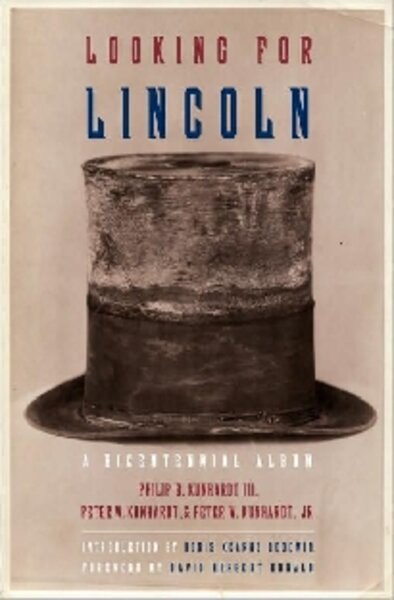Looking for Lincoln
Loading...
(To see images from this and other photo books reviewed by the Monitor, click here.) Abraham Lincoln’s legacy was shaped not only by his presidency and his role during the Civil War, but also by various individuals with very different agendas in the years following his assassination. Looking for Lincoln: The Making of an American Icon (Knopf, 493 pp., $50), one of many books published to mark the upcoming bicentennial of Lincoln’s birth, uses photographs, illustrations, letters, and newspaper articles to document the way that Lincoln’s image was continually shaped to meet the needs of each era, beginning at the end of Lincoln’s life in 1865 and concluding with the death of his last surviving son, Robert, in 1926.
Apart from the 16th president himself, two characters loom largest in “Looking for Lincoln”: Lincoln’s oldest son, Robert, and black activist Frederick Douglass. Both men sought to control the meaning of Lincoln’s legacy but for very different personal reasons.
In the case of Robert Lincoln, his motivation was selfish: As a politician and businessman, Robert saw his own success tied to that of his father.
Douglass, on the other hand, was involved in a bigger battle: the quest for full citizenship for a whole race of Americans.
At the moment of Lincoln’s assassination, the country was still deeply divided over its president’s ideals. The work was left to Lincoln’s successors, who often didn’t agree on the path forward.
Douglass sought both to elevate Lincoln’s status and to emphasize Lincoln’s commitment Douglass’s goals.
He told, for instance, of the last conversation he had with Lincoln: “ ‘Douglass I saw you in the crowd today, listening to my inaugural address. How did you like it?’ I replied, ‘Mr. Lincoln, I must not stop to talk to you now. Thousands are here, wishing to shake your hand.’ But he said, ‘You must stop. There is no man in the United States whose opinion I value more than yours. How did you like it?’ ”
This book, compiled and written by members of the Kunhardt family, is a sequel to “Lincoln: An Illustrated Biography.”
The Kunhardts, who for five generations have made a cottage industry out of collecting Lincoln memorabilia, use long-forgotten or previously unpublished material and rare portraits to highlight the route that Lincoln’s image took from embattled president to international icon.
“Looking for Lincoln” is not a deep psychological profile of the 16th president. It documents in a factual manner the numerous events and forces that created the Lincoln we recognize today.
But by thumbing through this lavishly illustrated and well-organized book, we also learn much about the views of Lincoln held by those closest to him.
We read about his troubled relationship with his father and his passion for his younger sons. We learn about the distinction he made between rights for blacks and those for native Americans.
But more important, we bear witness to the generations that shaped Lincoln’s legacy for their own purposes.
And even if all of this were not reason enough to pick up this book, the photo gallery of all known Lincoln portraits is not to be missed.
Alfredo Sosa is the Monitor’s photo editor.






